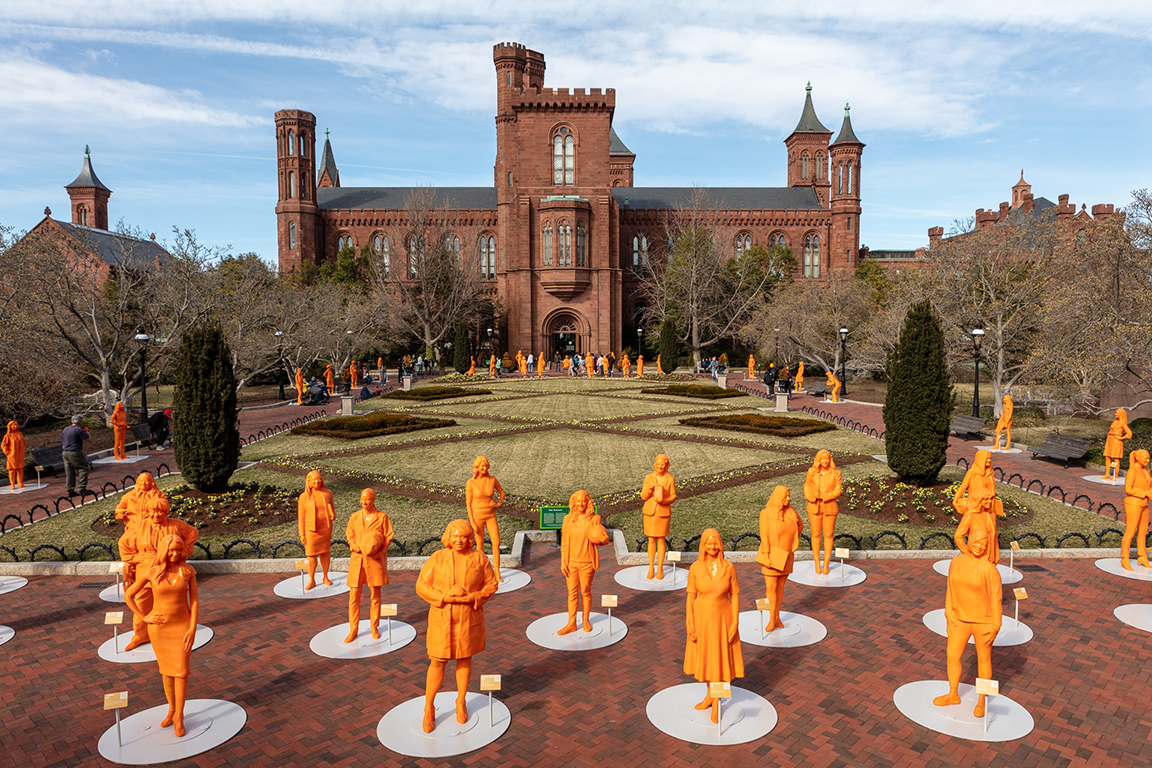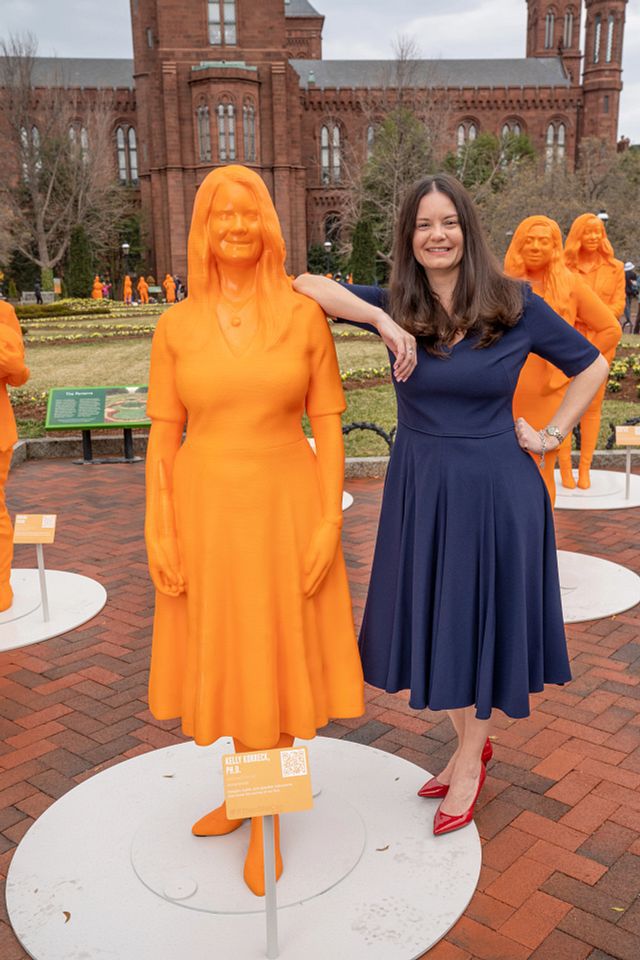
Alumna Featured in Smithsonian Exhibit Celebrating Women in STEM
Alumna Dr. Kelly Korreck was featured in #IFTHENSHECAN, an exhibit honoring 125 women in STEM at The Smithsonian.

Alumna Dr. Kelly Korreck was featured in #IFTHENSHECAN, an exhibit honoring 125 women in STEM at The Smithsonian.
Dr. Kelly Korreck, an alumna of the U-M Department of Climate and Space Sciences and Engineering, was featured in #IFTHENSHECAN, an initiative recognizing women in STEM careers. Her likeness was exhibited at The Smithsonian, in one of 125 statues modeled after women who have become leaders in their fields.
Women innovators from across the country were selected to serve as IF/THEN Ambassadors by the American Association for the Advancement of Science and Lyda Hill Philanthropies. The ambassadors share their stories and serve as high-profile role models for middle-school girls.
Reaching a young and eager audience, Korreck shared that she’d always had a love of nature, libraries, and museums. She said she was inspired by her fifth grade teacher to become a scientist, and she remembered observing Haley’s Comet as it passed by the Earth. She also reminisced about a time in college at the U-M Climate and Space, when she found a video from NASA’s TRACE solar satellite.
Korreck described the memory in the biography she shared for the project:
“At that time, we had to go to a conference room to play the video and the images were magical—the sun’s magnetic loops shake and shimmer. I was hooked. I got involved with a group who studied the Sun’s wind. I completed my Ph.D. and was looking for a job. It was hard. I was about to leave the field when a mentor told me to do one more talk and then we would discuss what other fields I would go into.
“After that talk, a scientist came up to me and asked if I was looking for a job. He had a job working on a solar telescope and operating NASA’s TRACE satellite—the satellite that led me to solar physics. I gleefully accepted and more than a decade later, I am using the next generation solar satellites to answer my biggest question which is: how do we live with our star and keep safe our society from its storms?”

Now an astrophysicist, Kelly Korreck builds and operates instruments to study the Sun and understand its hot explosive outer atmosphere or corona. Her career has taken her from the desert of New Mexico, to Japan, to the inner most part of the solar system. Currently, Kelly is the head of science operations and project manager for the SWEAP Suite aboard Parker Solar Probe. She works with engineers and scientists to create the best data from this once in a lifetime mission.
Kelly holds a Bachelor of Science degree in Physics and Astronomy and a Ph.D. in Space Physics, both from the University of Michigan. When not studying the Sun, she can be found near the beach, running, dancing, or in the yoga studio.
IF/THEN seeks to further advance women in science, technology, engineering and math (STEM) by empowering current innovators and inspiring the next generation of pioneers. Rooted in a firm belief that there is no better time to highlight positive and successful female professional role models, IF/THEN is designed to activate a culture shift among young girls to open their eyes to STEM careers in three ways. These include funding and elevating women in STEM as role models; convening cross-sector partners in entertainment, fashion, sports, business and academia to illuminate the importance of STEM everywhere; and inspiring girls with better portrayals of women in STEM through media and learning experiences to pique their interest in STEM careers.
For more, visit: ifthenshecan.org
Photos courtesy of the IF/THEN Collection.